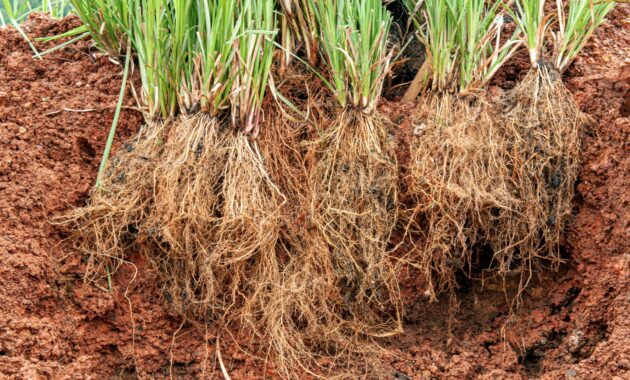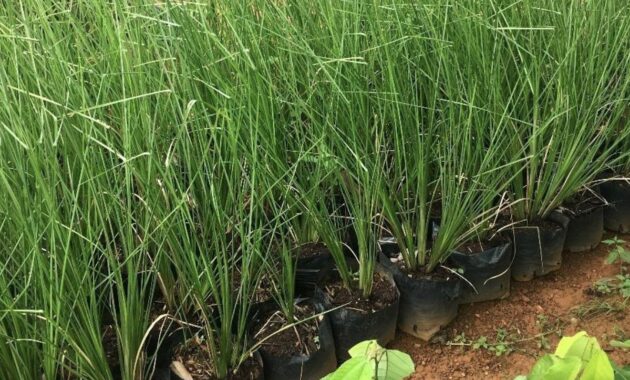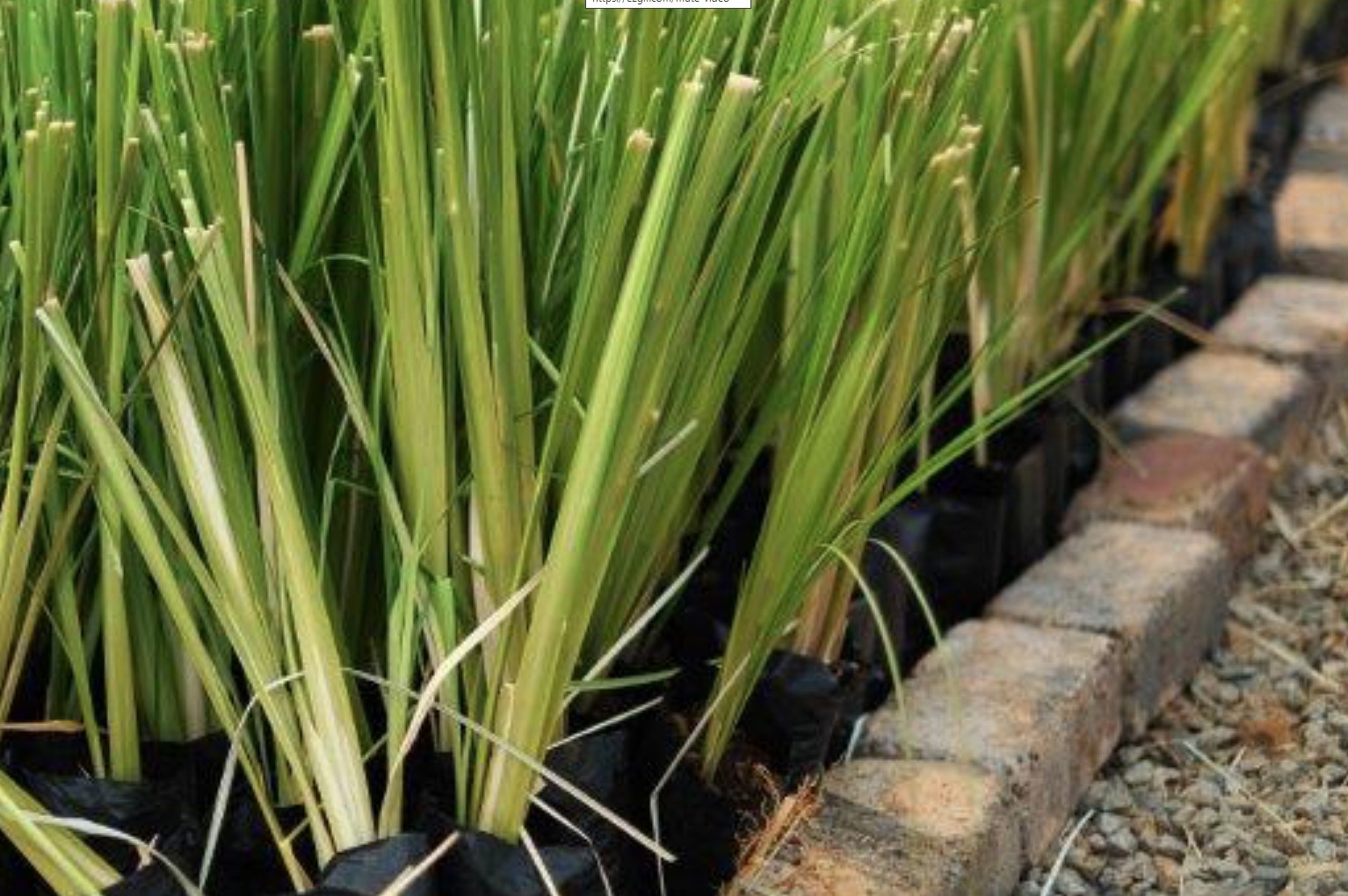
If you’ve ever heard of vetiver, you’re probably familiar with its use in perfumes and essential oils, but this plant is so much more than just a lovely scent. Known for its impressive soil conservation abilities and aromatic roots, the vetiver plant (Chrysopogon zizanioides) is one of those incredible plants that seem to have endless benefits.
I first came across vetiver when I was looking for an eco-friendly solution to control soil erosion in my garden, and boy, did it blow me away! Not only did it stabilize my sloped backyard, but it also brought a lovely fragrance and a new use for DIY projects.
What Is the Vetiver Plant?
The vetiver plant, also called khus in some regions, is a perennial grass that belongs to the Poaceae family. Unlike other grasses, which spread horizontally, vetiver’s roots grow vertically, reaching up to 4 meters (13 feet) deep. This makes it a champion for preventing soil erosion and a fantastic addition to any garden where water runoff is an issue.
| Feature | Description |
|---|---|
| Scientific Name | Chrysopogon zizanioides |
| Common Names | Vetiver, Khus Grass |
| Family | Poaceae (Grass family) |
| Native Region | India, but cultivated worldwide |
| Plant Type | Perennial grass |
| Height | Up to 1.5 meters (5 feet) above ground, with roots up to 4 meters |
| Primary Uses | Soil conservation, perfumery, medicinal, aromatic |
The Unique Characteristics of Vetiver
The vetiver plant isn’t just any grass—it has some pretty special features that make it stand out from the crowd.
1. Deep Root System
The deep, vertical root system of vetiver is probably its most famous feature. These roots make it an excellent choice for soil stabilization in areas prone to erosion or landslides. The roots are strong enough to hold the soil together, preventing runoff even during heavy rains. I planted vetiver along a slope in my garden, and it was amazing to see how much it reduced water erosion!
2. Aromatic Roots
The vetiver plant is widely used for its fragrant roots. If you’re into essential oils, vetiver oil is a popular base in perfumes because of its earthy, woody, and slightly smoky scent. This oil is also used in aromatherapy to relieve stress, anxiety, and insomnia. I remember the first time I smelled vetiver oil—it was calming and grounding, unlike anything I’d experienced before.
3. Eco-Friendly
Vetiver is a natural solution to many environmental problems. It’s used for reclaiming wasteland, cleaning wastewater, and even as a bioengineering tool to stabilize riverbanks and roadside cuttings. If you’re into sustainable gardening, vetiver is a must-have.
Benefits of Growing Vetiver
There are so many reasons to grow vetiver in your garden, from practical uses to its therapeutic benefits. Here are just a few:
1. Soil Erosion Control
This is the number one reason many people plant vetiver, especially on slopes or areas with heavy rain. Its roots help bind the soil together, preventing it from washing away. Even in areas with poor soil quality, vetiver can thrive and provide much-needed stabilization.
2. Natural Air Freshener
Vetiver’s roots are not just for the ground—they can also be harvested and used as natural air fresheners. I’ve made small sachets of dried vetiver roots and placed them in my closets and drawers, where they give off a lovely, subtle scent that lasts for months.
3. Water Purification
Believe it or not, vetiver is sometimes used in wastewater treatment to absorb heavy metals and toxins from polluted water. Its roots act like a natural filter, cleaning water as it flows through. If you have a pond or water feature in your yard, planting vetiver nearby can help improve water quality.
4. Essential Oils
The essential oil derived from vetiver roots is used in perfumes, cosmetics, and aromatherapy. It has a grounding and calming effect, making it ideal for reducing stress and promoting sleep. I’ve used vetiver oil in a diffuser at night, and it really helps me unwind after a long day.
5. Medicinal Uses
Vetiver has been used in traditional medicine for centuries. In Ayurvedic medicine, it’s known for its cooling properties and is used to treat fevers, headaches, and inflammation. It’s also said to have antioxidant and antimicrobial properties, though I’d recommend consulting a professional before using it medicinally.

How to Grow and Care for Vetiver
Vetiver is quite low-maintenance once established, but here are a few tips for getting the most out of your vetiver plants:
1. Planting
Vetiver thrives in a range of soil types, from sandy to clay. However, it prefers well-drained soil and lots of sunlight. If you’re planting it for erosion control, space the plants about 15-30 cm (6-12 inches) apart to allow the roots to interlock.
2. Watering
Vetiver is drought-tolerant but will grow faster and more vigorously with regular watering, especially during the first few months. After that, you can water it less frequently as its deep roots can access groundwater.
3. Pruning
Vetiver can grow tall, reaching up to 1.5 meters (5 feet), so you might want to trim it back every so often to keep it manageable. The good news is that vetiver can be pruned heavily without harming the plant—it will quickly regrow.
4. Propagation
Vetiver is generally propagated through root division. After the plant has matured, you can dig it up, divide the roots, and replant them. I found this to be a really easy process, and I’ve managed to propagate several new vetiver plants from just one original plant.
Surprising Uses of Vetiver
Vetiver isn’t just a useful garden plant; it has some unexpected applications as well.
1. Vetiver Mats
In some parts of the world, vetiver roots are woven into cooling mats that are placed on windows to cool the air as it passes through. These mats are also used in furniture and rugs, thanks to their durability and natural scent.
2. Livestock Fodder
Though it’s not as common in the U.S. or Europe, vetiver is sometimes used as fodder for livestock. Its leaves are rich in nutrients and make a good feed for animals like cattle and goats.
3. Decorative Landscaping
Because of its tall, graceful appearance, vetiver can also be used in landscaping as an ornamental grass. I’ve seen it planted in clusters to create privacy screens or to line pathways, and it gives off a lovely natural vibe.
Conclusion: Why Vetiver Should Be Your Next Garden Addition
If you’re looking for a versatile, low-maintenance plant that can solve practical problems while also providing aesthetic and therapeutic benefits, vetiver is a great option. Whether you need to control soil erosion, improve water quality, or just want a natural aromatherapy solution, vetiver has you covered.
I’ve found it to be one of the most rewarding plants in my garden, and its unique uses never cease to amaze me. Give it a try, and I’m sure you’ll fall in love with this wonder grass just like I did!



